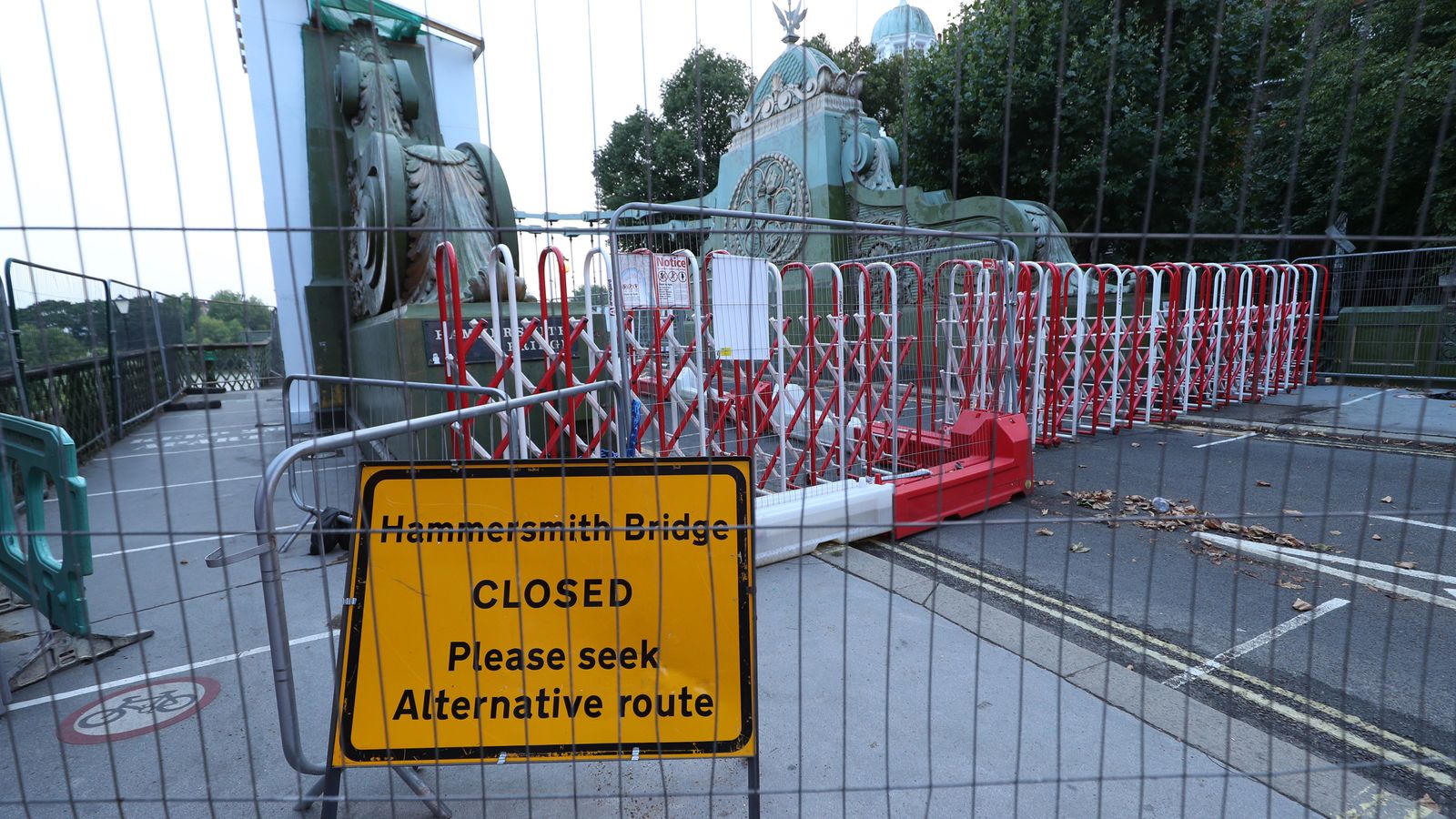More than 3,000 bridges across the UK have been identified as being substandard by local authorities, figures show.
The designation means they are unable to carry the heaviest vehicles, potentially leading to headaches for motorists forced to pursue alternative routes to their destination.
Some 3,211 bridges were identified at the end of 2021, according to the RAC Foundation – an increase for the second year running.
It’s up 3.4% on the total of 3,105 in 2020, and up 5.1% on the figure of 3,055 in 2019.
Where has the most substandard bridges?
Devon has the highest number of substandard bridges at 229.
It’s followed by Oxfordshire with 222, Essex on 167, Somerset’s 128 bridges, and Cornwall’s 124.
Ex-Iran detainee Anoosheh Ashoori accuses Boris Johnson of ‘opportunism’ for getting in touch only after his release
Final whistle for Chelsea bidders as bankers kick out string of offers
Legal loophole which let drivers escape penalties for using phone at the wheel closes today
Overall, councils reported that 17 bridges had fully collapsed during the previous 12 months.
Of those, a dozen were in Dorset and five were in Denbighshire. A further 37 bridges had partially collapsed, many of which were relatively short structures.
What are the consequences of a bridge being deemed substandard?
Many of these bridges are subject to weight restrictions, while others have to be monitored more regularly or even placed into managed decline.
An extreme example is Hammersmith Bridge in west London, where cracks in the pedestals have led to motor vehicles being banned from using the 135-year-old cast iron structure since April 2019.
When bridges reach a substandard state, it’s down to the local authority to decide what to do about it.
Between them, they say they would ideally like to restore 2,374 of the bridges back to full carrying capacity, but budgetary constraints mean only 379 are expected to have the necessary work carried within the next five years.
Please use Chrome browser for a more accessible video player
‘More severe weather must be a worry’
Bridges deemed substandard have often been built to older design standards and deteriorated through age.
With that in mind, there are concerns about the impact that increasingly severe weather events caused by climate change may have in the years ahead.
RAC Foundation director Steve Gooding said while the increase in substandard bridges last year was “not huge”, the situation was “flatlining” rather than improving.
“And with the threat of more severe weather events linked to climate change,” he added, “that must be a worry for the overall resilience of our highway network.”
The figures were obtained from 196 councils via freedom of information requests, with the analysis carried out in partnership with Adept, a group representing local authority bosses responsible for transport and other sectors.






















